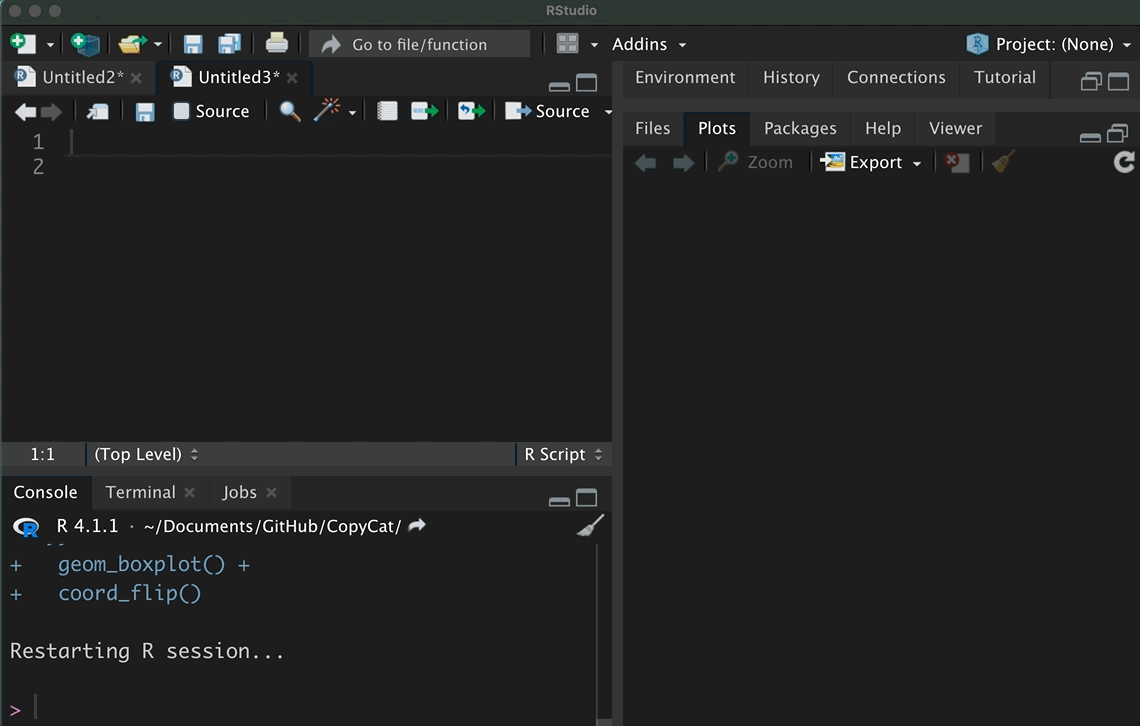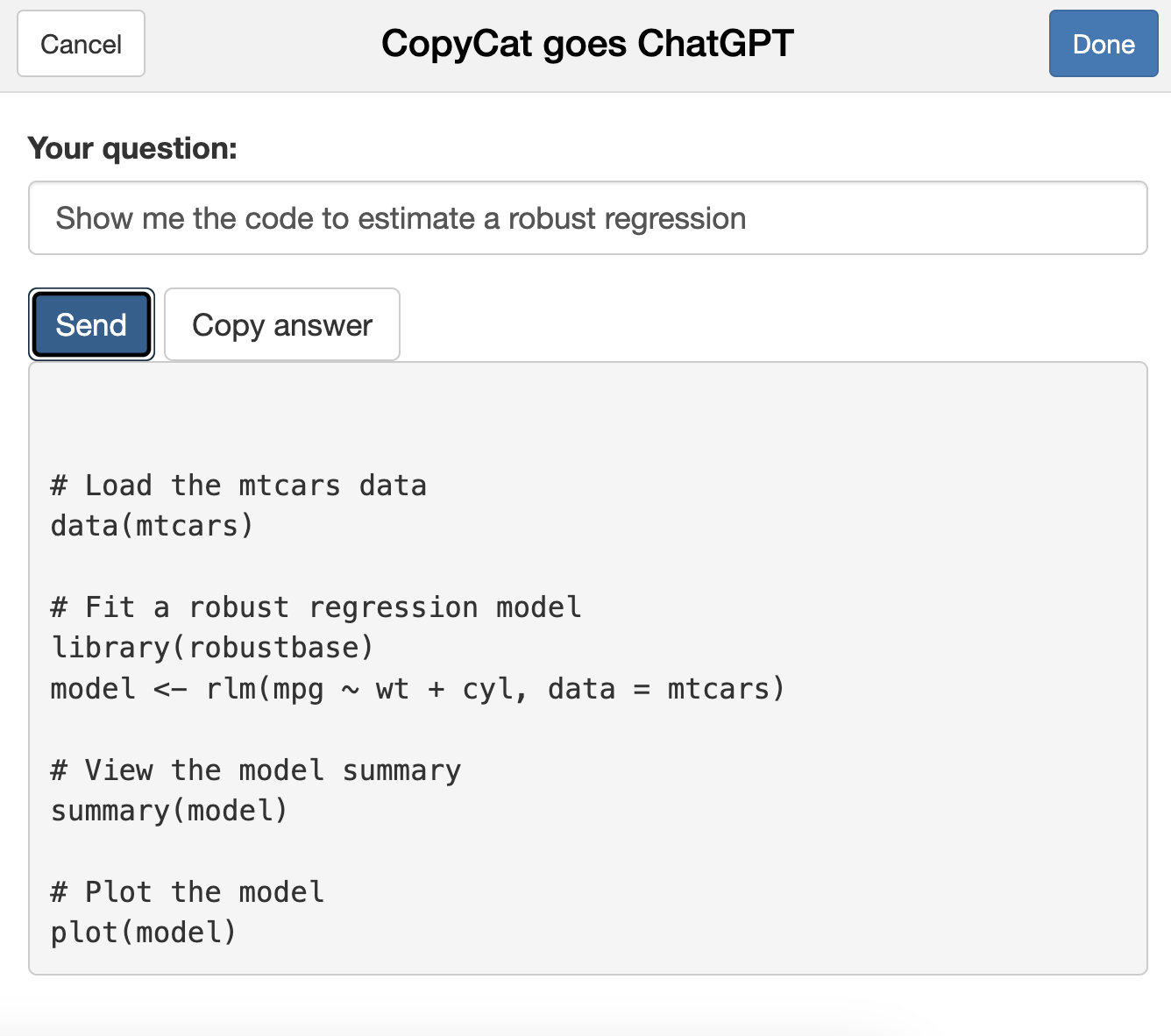CopyCat is a small package to copy, paste, and manage code snippets. CopyCat comes with code snippets (minimal examples) that run with implemented data. In addition, CopyCat provides an interface to ask ChatGPT questions about R. CopyCat was built as a personal package for the lazy cats, but it may help (new) R users to learn R.
Installation
Install CopyCat from my GitHub account with:
devtools::install_github("edgar-treischl/CopyCat",
build_vignettes = TRUE)Explore the Copycat code snippets
CopyCat comes with a data (CopyCatCode) that includes code snippets from the cheat sheets of the ggplot2, tidyr, and more packages from the tidyverse. The data include the package name, the function name, and the code of the minimal example.
Copy a code snippet with the copycat_addin() which runs a graphical interface. Pick a function and press the insert code button. RStudio inserts the code for you. The gif shows how the RStudio addin works.

Get help from ChatGPT
The package has a built-interface to get help from ChatGPT. To connect with ChatGPT, go to openai, create an account and generate an API key. Next create an object called (gtp_api) for your API key or use the keyring package to save the key savely.
#SET API Key as gtp_api
gtp_api <- "your-key"
#Or store it with keyring
keyring::key_set("gtp_api")After your API key is set, you can sent your questions via the ask_gpt() function. I primed ChatGPT to be your R tutor. Thus, ChatGPT will return a solution with R and via the console. For example:
#Ask GPT for help
library(copycat)
ask_gpt(message = "Show me the code to estimate a robust regression")
#>
#>
#> # Load the mtcars data
#> data(mtcars)
#>
#> # Fit a robust regression model
#> library(robustbase)
#> model <- rlm(mpg ~ wt + cyl, data = mtcars)
#>
#> # View the model summary
#> summary(model)
#>
#> # Plot the model
#> plot(model)Consider the help files to adjust the text model, the number of maximal tokens (maxtoken), the temperature (tempvalue) and further ChatGPT parameters. Moreover, there is no need to remember the function and options. Just use the AskGPT addin as the next illustration shows. It’s an interface to send messages to ChatGPT.

As outlined, I started to build CopyCat as a personal package. It provides more features but some of its features are still experimental stage. For example, use the copycat_random() in your start up to explore functions from packages that have been installed on your computer. It randomly picks a example function that is installed on your computer.
#Get the code example of a random function from an installed package
copycat_random()
#Package and function of the day: concaveman::concaveman
library(concaveman)
#concaveman: A very fast 2D concave hull algorithm.
#Examples:
data(points)
polygons <- concaveman(points)
plot(points)
plot(polygons, add = TRUE)
Inspect the Get started vignette for more information.
